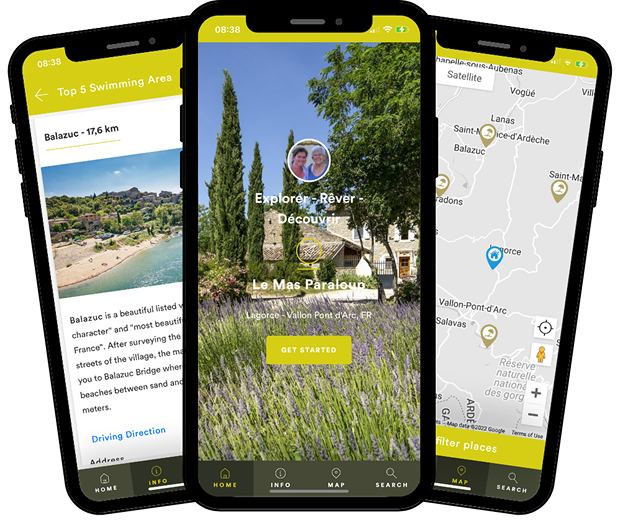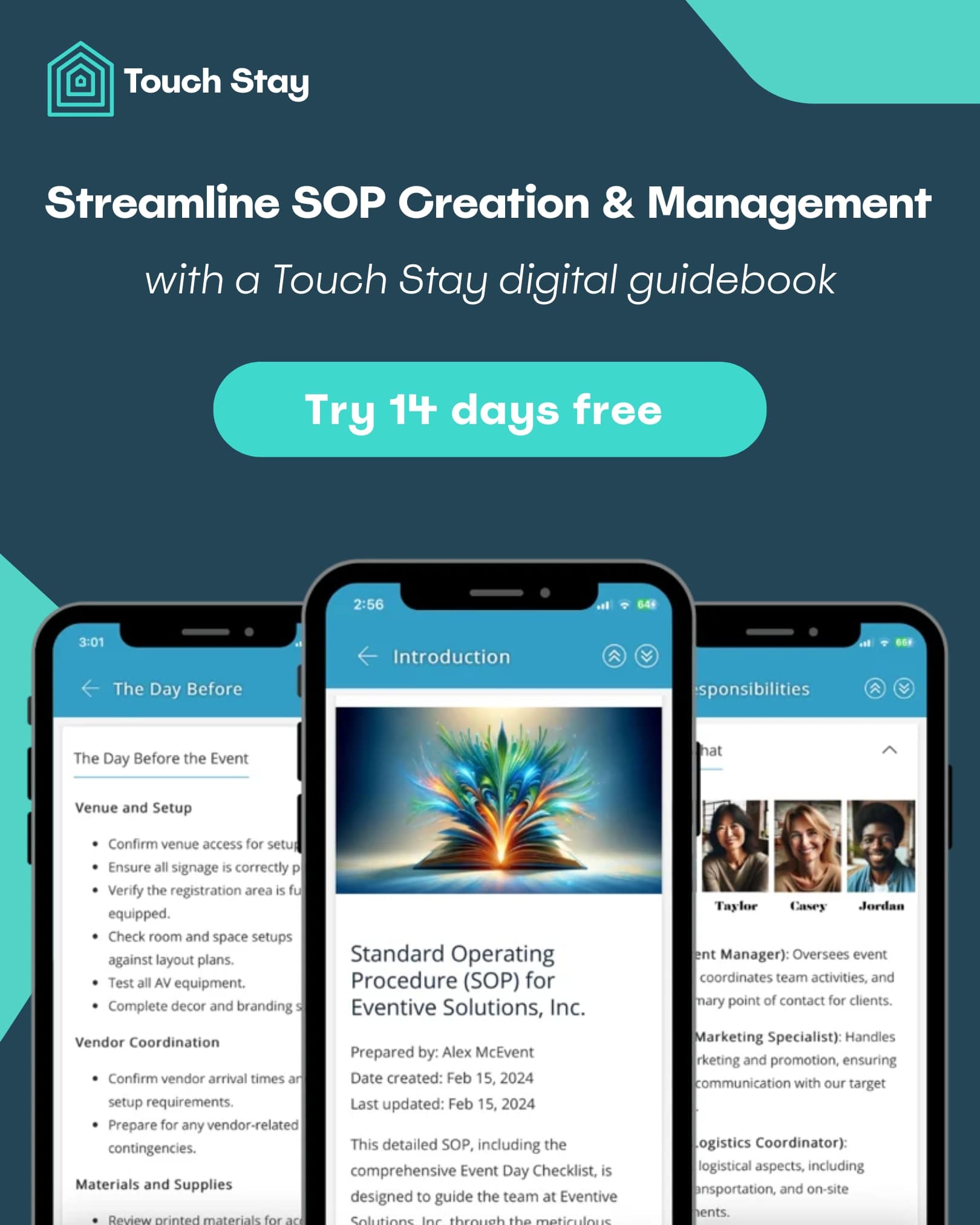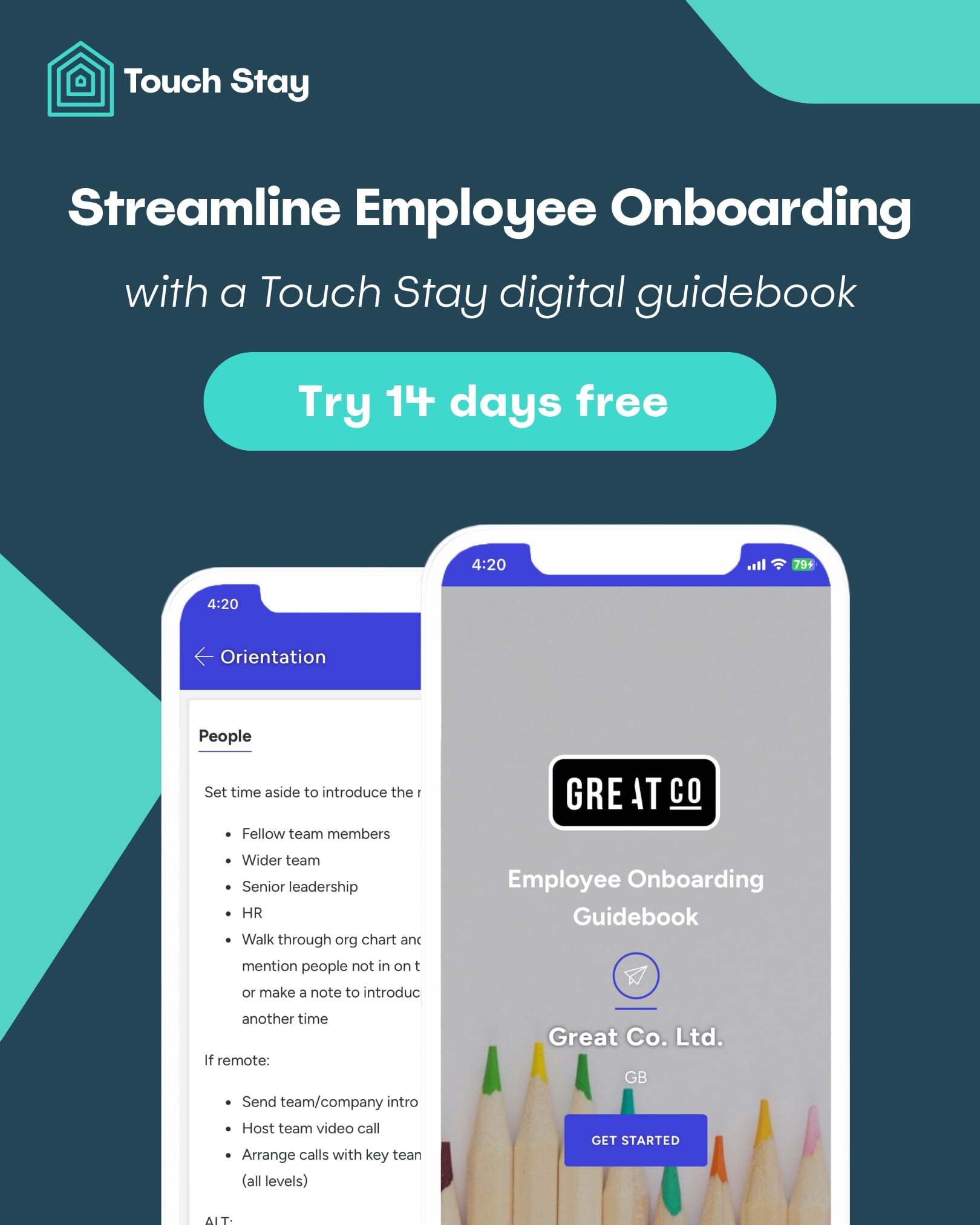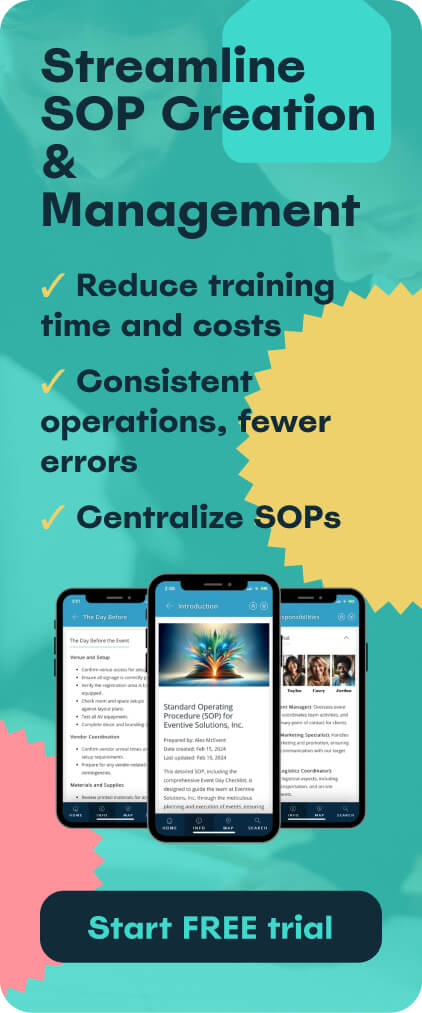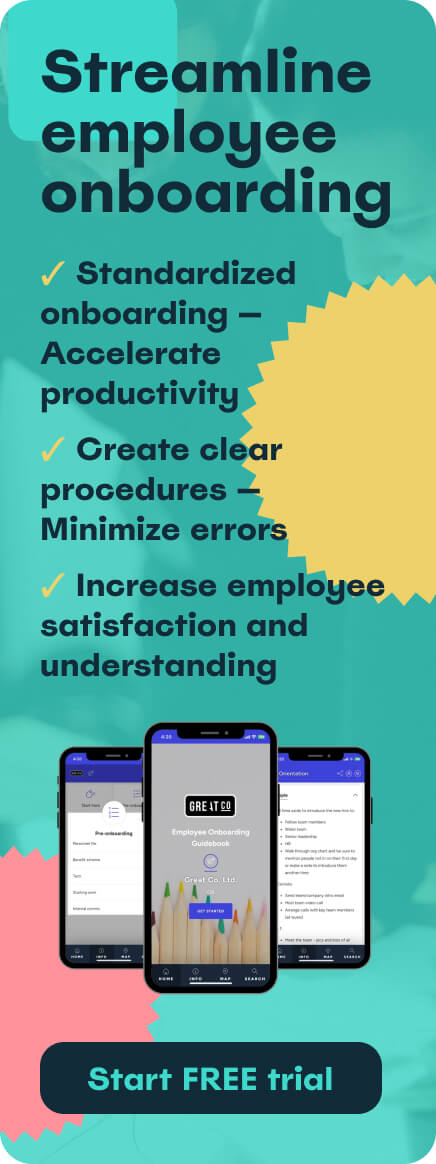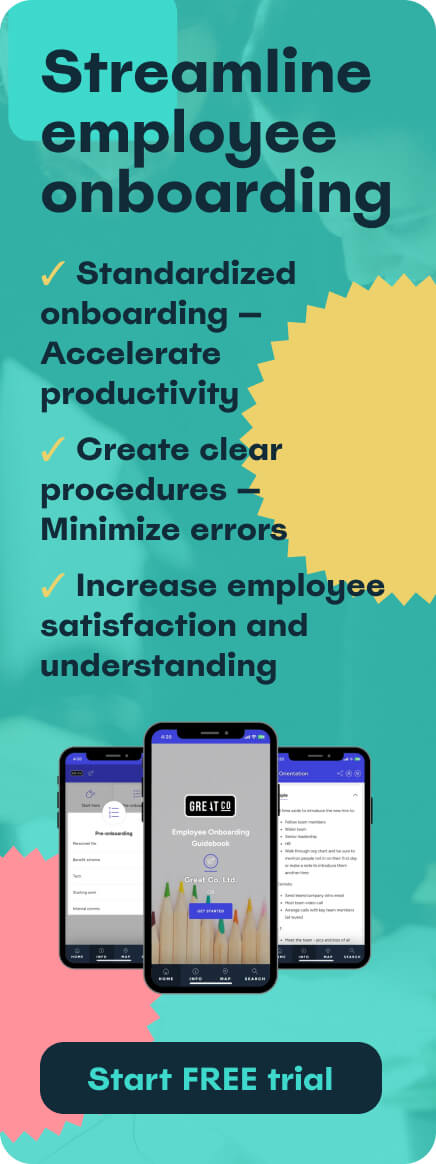Let's face it, a good employee handbook is so much more than just a bunch of rules. It’s a crucial part of getting new hires up to speed and building a great company culture. If you're putting together your first one or just giving an old one a facelift, looking at some of the best examples out there can give you some brilliant ideas.
A well-written handbook can really make a difference, turning someone who’s just started into a confident team member right away. If you'd like to learn more, we've got a blog post all about why employee onboarding is so important. In this guide, we're going to dive into:
- When and why should a company make an employee handbook?
- What should an employee handbook contain?
- 10 best employee handbook examples
- Best employee handbook solutions compared
- Conclusion
- FAQs
Want an effortless employee onboarding experience? Try Touch Stay for free!
When and why should a company make an employee handbook?
The decision to create an employee handbook is a pivotal one for any business, regardless of its size or industry. It's not just a legal formality; it's a strategic move that sets the foundation for a productive, transparent, and legally compliant workplace. Here’s a closer look at the key reasons why and when a company should invest in an employee handbook, with each point serving as a building block for a strong organisational culture.
Pro tip: confused about employee onboarding? Click here to learn more about it.
1. It sets clear expectations and guidelines
An employee handbook acts as a single, authoritative source of truth for company policies and procedures. It removes ambiguity by outlining everything from working hours and leave policies to professional conduct and communication standards. By providing this information upfront, you empower employees with the knowledge they need to succeed and reduce the likelihood of misunderstandings or disputes. A clear handbook means everyone is on the same page from day one.
2. It defines and reinforces company culture
A handbook is a powerful tool for communicating your company’s mission, values, and vision. It’s an opportunity to move beyond a simple list of rules and to articulate the kind of workplace you want to build. The best handbooks reflect the unique personality of a company, using tone, design, and content to convey what it truly means to be a part of the team. This helps new hires feel a sense of belonging and reinforces the core principles that guide everyday decisions.
3. It streamlines the onboarding process
Onboarding is a critical period for new employees. A well-structured handbook can significantly cut down the time and effort spent on introducing new hires to the company. Instead of relying on ad hoc explanations, you can provide a comprehensive, easily accessible guide that covers everything they need to know. A digital handbook, like those from Touch Stay, is especially effective here, as new employees can access it on their phones or tablets before they even start, allowing them to arrive on their first day feeling prepared and confident.
4. It ensures legal compliance and mitigates risk
Employee handbooks are essential for protecting your business. They help ensure you are compliant with all relevant laws and regulations by documenting your policies on equal opportunity, anti-harassment, and other legal requirements. A well-written handbook with an acknowledgment form can serve as a vital defence in the event of legal action, demonstrating that the company has communicated its policies clearly to all employees. Regularly updating your handbook is crucial to stay abreast of changes in employment law.
5. It serves as a central reference point
Even for long-standing employees, an employee handbook is an invaluable resource. Questions about benefits, performance reviews, or specific procedures can be answered quickly and accurately by referring to the handbook. This reduces the burden on HR and management, allowing them to focus on more strategic tasks. A digital handbook, with its search functionality, makes finding information even easier, saving time for everyone.
Pro tip: discover how to onboard a new employee: processes, best practices and metrics
What should an employee handbook contain?
A comprehensive employee handbook is an essential resource for any organisation, as it establishes clear expectations, policies, and guidelines for employees. This handbook serves as a central reference point, covering critical areas such as company information, employment policies, compensation and benefits, code of conduct, safety and security, performance management, and legal compliance.
By outlining these key elements in a well-structured handbook, employers can ensure that all employees have a consistent understanding of the company's practices and expectations, thereby fostering a productive, engaged, and compliant workforce. Make sure you include:
- Company Information: Start with the basics. Introduce your company's history, mission statement, core values, and organisational structure. This section is about building a sense of purpose and connecting employees to the bigger picture.
- Employment Policies: Detail the practicalities of working at your company. This includes everything from hiring processes and equal opportunity statements to classifications of employees, work schedules, and remote work policies.
- Compensation and Benefits: Be transparent about how employees are compensated. Cover pay periods, time tracking procedures, healthcare benefits, retirement plans, and paid time off policies. Clarity here helps build trust and minimises payroll questions.
- Code of Conduct: This is where you set the standards for professional behaviour. Include guidelines on dress code, communication, use of company property, and conflict resolution procedures. This section is vital for maintaining a respectful and productive workplace.
- Safety and Security: Prioritise your employees' well-being. Outline workplace safety guidelines, emergency procedures, data security policies, and confidentiality requirements.
- Performance Management: Explain how you support employee growth. Detail the performance review process, career development opportunities, training programmes, and promotion criteria. This shows a commitment to your team’s professional journey.
- Legal Compliance: Protect both the company and the employee by including legally required policies. This should cover anti-discrimination policies, sexual harassment prevention, FMLA and other leave policies, and ADA compliance.
10 best employee handbook examples
The best handbooks are not just static documents; they are dynamic reflections of a company's culture and values. They are designed to be engaging, informative, and easy to use. Here are 10 outstanding examples from leading companies that you can draw inspiration from.
1. Valve
Valve's famous handbook, A New Employee Handbook: a guide to working at Valve, went viral for a reason. It's a humorous and informative comic book-style guide that introduces new employees to the company's unique flat hierarchy and ‘free-to-choose-your-projects’ ethos. It’s an imaginative and playful approach that perfectly reflects its company's culture.

2. Netflix
Netflix's Culture Deck is a renowned example of a handbook that focuses on principles rather than strict rules. It famously states, "Our philosophy is people over process." This document outlines the company's core values, such as "freedom and responsibility," and uses a slide-based format to make the content digestible. It's a great example of a handbook that prioritises culture and transparency.
3. Zappos
The Zappos Culture Book is a unique and inspiring example of an employee handbook. It's a compilation of thousands of employee testimonials and stories, making it a living document that captures the essence of the company's customer-centric culture. This approach showcases how a company can empower its employees to define and own the workplace culture.
4. Hubspot
Hubspot’s Culture Code is a 128-slide presentation that serves as a manifesto and employee handbook. It’s a brilliant example of using a visually engaging format to explain company principles and expectations. The document is transparent and honest, filled with images and colours that keep the reader engaged.

5. Trello
Trello's employee manual is a clever and practical example of a company using its own product. The handbook is created as a public Trello board, with different cards representing different policies and procedures. This not only makes the information easy to navigate but also familiarises new hires with the tool they will use daily.
6. Nordstrom
Nordstrom’s famous one-rule handbook is a masterclass in simplicity. Its single rule is, “Use good judgment in all situations.” While a full handbook contains much more, this simple philosophy at its core serves as a powerful statement about trust and empowerment. It’s a bold approach that communicates a high level of confidence in its employees.
- Link to a summary/guide: https://www.deel.com/blog/employee-handbook-examples
7. GitLab
GitLab's handbook is a massive, publicly available document that serves as a central hub for all company knowledge. With over 2,000 pages, it is a testament to the company's commitment to transparency and its remote-first culture. The handbook is a 'single source of truth' for everything from company values to operational procedures.

8. Airbnb
Airbnb has an innovative remote employee handbook that reflects its unique culture. It has a playful and informal tone, guiding employees through policies with a lighthearted approach. This aligns with its brand personality and makes what could be a dry document much more engaging.
9. The Motley Fool
The Motley Fool's Fool Rules is an interactive and fun handbook that uses videos, photos, and a glossary of company jargon. It is designed to be engaging and embodies the company's unconventional and humorous culture. This handbook shows that even financial services can have a fun, approachable side.
10. Pronto Marketing
Pronto Marketing's handbook is a great example of a web-based, visually appealing guide. It’s easy to navigate, with a clickable table of contents that allows employees to quickly find the information they need. It’s a comprehensive yet accessible document that proves that a handbook can be both functional and beautiful.

Best employee handbook solutions compared
When it comes to creating an effective employee handbook, the sheer number of options can be overwhelming. Do you go with a dedicated digital handbook platform, integrate it into your existing HR software, or build it out using a collaborative workspace tool?
To help you navigate this landscape, we've compared the key features, target audience, and pricing of three top employee handbook solutions that stand out in 2025.
1. Touch Stay digital employee handbook
Platform type: digital handbook creator
Website: Touch Stay
Best for: companies wanting an interactive, mobile-first employee handbook
Key features:
- Interactive digital format
- Mobile-responsive design
- Real-time updates capability
- Multimedia integration
- Analytics and tracking
- Customisable templates Pricing: from £12.50/month

Why it works: Touch Stay transforms traditional employee handbooks into engaging digital experiences. The platform's strength lies in its ability to create interactive, easily updatable guidebooks that new employees can access anywhere. Perfect for modern businesses focusing on digital-first onboarding.
Pricing: Free!
2. Trainual
Platform type: business playbook and training platform
Website: Trainual
Best for: Small to medium-sized businesses needing comprehensive onboarding solutions
Key features:
- Process documentation
- Role-specific training paths
- Test creation capabilities
- Content library
- Integration with major HR tools
- Mobile app access
Pricing: starting at $124/month for up to 10 users
Why it works: Trainual specialises in making company knowledge easily accessible and digestible. Their platform combines handbook functionality with training capabilities, making it ideal for comprehensive employee onboarding.
3. Notion
Platform type: collaborative workspace platform
Website: Notion
Best for: tech-savvy companies wanting a collaborative handbook solution
Key features:
- Customisable templates
- Real-time collaboration
- Rich media integration
- Searchable content
- Integration capabilities
- Version history
Pricing: free plan available; team plan starts at $8/user/month
Why it works: Notion's flexibility makes it excellent for creating living documents that can be easily updated and shared across teams. Their template gallery includes pre-built employee handbook frameworks.
Conclusion
The best employee handbooks go beyond simply listing policies and procedures—they serve as powerful tools for communicating company culture, values, and expectations. Whether you choose a traditional format or a modern digital approach like Touch Stay's employee handbooks, the key is to create a handbook that is:
- Easy to understand and navigate
- Regularly updated and maintained
- Accessible when and where needed
- Aligned with company culture and values
- Comprehensive yet engaging
By learning from these top employee handbook examples, you can create a resource that not only serves its primary purpose of policy documentation but also helps build a stronger, more cohesive workplace culture.
Remember that the most effective employee handbooks are living documents that evolve with your organisation. Consider using modern solutions like Touch Stay's digital guidebooks to create an employee handbook that can be easily updated and accessed, ensuring your policies and procedures stay current and relevant in today's dynamic business environment.
Create a smooth onboarding process with a Touch Stay employee handbook!
FAQs
The top solutions offer features like digital/interactive formats, mobile access, real-time updates, multimedia integration, training capabilities, and integration with HR systems.
Trainual is a good option for small to medium-sized businesses, with its combination of handbook and comprehensive onboarding functionality.
Touch Stay employee handbooks are recommended for tech-savvy companies due to their flexible, collaborative workspace capabilities for creating living handbook documents.
Key elements include company information, employment policies, compensation/benefits, code of conduct, safety/security, performance management, and legal compliance.
An effective handbook is easy to navigate, regularly updated, accessible, and aligned with company culture and values, going beyond just listing policies.

Ned
Ned has clocked up over 11 years in digital marketing and comms, with a strong focus on creating engaging content for a range of brands and agencies. When he’s not writing, he can be found digging for records, peering through his telescope at the night sky, or onboard his local lifeboat where he volunteers as a crewmember.
Be the first to know!
Join our newsletter for early access to:
- ✅ Free guides
- ✅ Pro tips & tricks
- ✅ Time saving tutorials
- ✅ Latest blog posts
- ✅ Checklists & templates

